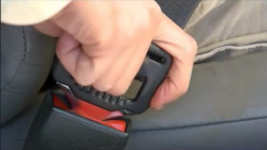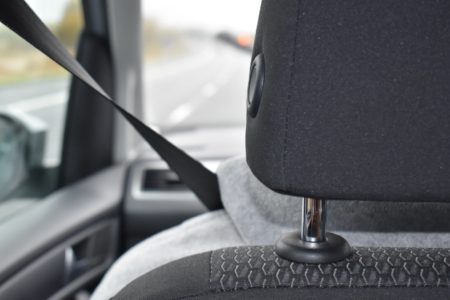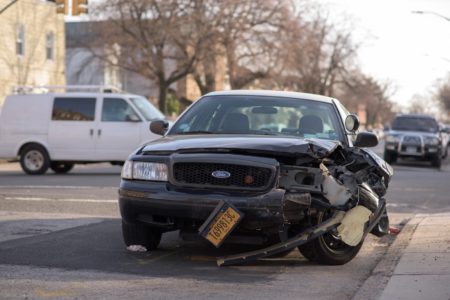How To Drive a Car | 7 Things to Do Before You Start the Car
Part of learning how to drive a car safely is developing safe driving habits. As you learn to drive do the following 7 things every time you get in the car. It will develop them into a habit. Experienced drivers have developed habits that keep them safe when driving a car.
1. Walk Around the Car
a) When learning how to drive a car get in the habit of walking around the car before you get in. Then you’ll see if there are any obstacles in front or behind you. There have been many tragic accidents when children were hidden behind cars that backed out of driveways.
b) You’ll also notice if there is any damage to your car. If someone scratched your car in a parking lot, you want to know before you drive away.
2. Adjust your Seat
You need to be high enough to see clearly and close enough to use the accelerator and brake. You also need to be at least 10 inches back from the airbag so if it explodes, you won’t get hurt.Tip: Use your measuring tape to make sure you’re at least 10 inches from the steering wheel. Once you have measured the distance use Lauren’s tip below to adjust your seat properly without the measuring tape.
Lauren’s Tip for Proper Seat Adjustment
Parents: Have your teens sit with their backs against the seat and their hands over the top of the steering wheel. Their wrists should ‘break’ at the top of the wheel and drape over the side.
If they have to lean forward to do this, they are sitting too far back. If the steering wheel hits further up their arm, they are too far forward.
Now, everyone’s body proportions are different. Some people have longer arms than others. Some modifications may be necessary to ensure safety.
If your teen’s knees hit the dash when their arms are at proper distance, try these adjustments:
1. Move the seat down
2. Change the position of the steering wheel
3. Put the seat back and/or up”
3. Adjust Your Mirrors
On most modern cars, blind spots can be minimized or eliminated by setting the driver-side and passenger-side mirrors correctly.
Simply follow Lauren’s instructions below.
“Cars have blind spots because we adjust our mirrors improperly. When you look at your side mirrors you can probably see the side of your car.
Why do you want to see that? It’s going where the front of the car is going, and no one is going to steal your gas cap at 65 mph.
As drivers we have this notion that we need to see how our car is positioned in the lane through our rear view mirrors. (Just look out the windshield for that.) Your mirrors may also overlap with the rear view mirror. (Meaning, when you look in both your side mirrors and your rear view mirror, you see the same objects.) This isn’t taking full advantage of the visual possibilities of side mirrors.”
Lauren’s Tips for How to Properly Adjust Your Mirrors When You Learn to Drive
Parents– Stand an arm’s length away from the rear quarter panel of the car.
Have your teen adjust the side view mirror so they can see your body. (Often – they’ll want to adjust it to see your face. That’s incorrect. Make sure they understand they should look at your body. That’s the height where another car would be.)
Do the same for the other side.
Slowly walk around the car at arm’s length, stopping every so often to ask if your teen can see you. They should be able to. You will start to disappear when you get toward the front door, but a car is much longer than you are. When the front of a car is where the front door is, the rear of the car will still be visible in the mirror, thus eliminating the blind spot.
NOTE: There is also a blind spot below the rear window on your vehicle. This spot cannot be removed without technology like back up cameras and parking sensors. That’s why it’s always best to walk around your car before you get in and drive.
4. Adjust Your Headrest
The headrest has a purpose beyond comfort. If you get in a crash, the headrest will support your head and could keep you from getting whiplash. You need to make sure you position it properly before driving a car.
Position the headrest so it’s squarely behind your head. When you’re sitting upright (ready to drive) your head should be within a couple of inches of the headrest.
5. Adjust the steering wheel

Adjust the steering wheel so it’s comfortable. Slightly tilted is best.
6. Do your “Seatbelt Check!”
7. Lock the doors
(If they don’t automatically lock when you put the car in gear.)
Since you will most likely learn how to drive a car in your parent’s car you will need to do the above every time you drive the car.
Practice these steps when you are learning how to drive a car. Make this a part of your Learn to Drive checklist. Look for more information in the Driving Lessons sections of the Workbook and the Video Library. See Driving Lesson 1.





15 thoughts on “Learn to Drive | 7 Steps Before You Start the Car”
Thank for teaching me i have Understand well, may God bless you
Hi I read this about how to become a Driver I will love to learn more about his an thanks for ur time for making us understand what to do before driving
Think for this advice
I want to know more about driving
I want to learn how to drive a car
I really enjoyed reading this article, thanks for sharing it. Traveling safely can be made much easier with this. Additionally, you need to make sure you have a good driving record. That’s why it is really important to take driving courses*/a> if we want to increase our knowledge and awareness about driving.
This is such an interesting article, thank you so much for sharing! Traveling safely can be made much easier with this. Having a safe driving record is another thing that you need to keep in mind. That’s why it is really important to take driving courses*/a> if we want to increase our knowledge and awareness about driving.
It is now that I realize that good things comes when the time is right thank you.
Thanks a lot
Great tips on driving
You’re welcome Michelle. There’s a lot of great info on our website. Check out our Youtube channel TL2DToday too.
Thank you so much this was an eye opener as the past week was my very first time to sit on the wheel. Would like you sent me more lessons.
Thanks so much for the teachings i have got from you.